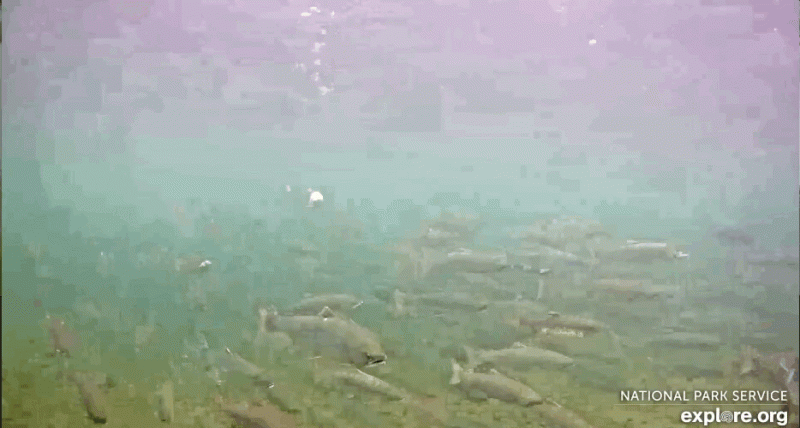By Mike Fitz
Fewer bears have been seen at Brooks Falls over the last few days. Is this a sign of change at Brooks River?
From late June to late July, sockeye salmon swim upstream to Brooks Falls and beyond to reach their spawning areas. Brooks Falls temporarily impedes migrating salmon and makes them more vulnerable to predation by brown bears. After salmon stop migrating and before they start spawning in Brooks River though, there’s a gap in time when salmon are not easily accessible to bears. This prompts most bears to leave Brooks River and seek food elsewhere.
Salmon escapement—the number of fish who escape upriver beyond the commercial fishery in Bristol Bay—has been relatively low recently. From July 20-23, escapement for the Naknek River watershed averaged 11,500 salmon, including zero fish counted on July 22 and 23. Compared to the peak of the run earlier in July (around 220,000 salmon entered the watershed on July 12 alone), then it becomes clear that the sockeye run is dwindling fast.
Most of the 2.2 million salmon that have entered the Naknek River watershed so far will not spawn in Brooks River, but salmon become widely available in many tributaries of Lake Brooks and Naknek Lake at the end of July and August. Through experience, bears have learned to expect this, and the lack of accessible salmon at Brooks River in midsummer, perhaps more than anything, motivates bears to seek food elsewhere.
Salmon move into most other streams to spawn and die in a fairly short time frame though. This contrasts with Brooks River where sockeye salmon migrate through or stage at either end of the river but don’t spawn until late summer. For bears who know when and how to fish at Brooks River, they can take advantage of two significant fishing periods—one in early summer during the salmon migration and one in late summer and fall during the spawning phase.
As a generalist omnivore who will eat nearly anything that is nutritious, bears are opportunists. They understand they’d better not miss the opportunity to fish at other locations when salmon are accessible. At Brooks River, once salmon begin to spawn and die in late summer, many will return for a second helping. Until then, we’ll probably see a quieter Brooks River.




